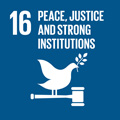- Docente: Mario Panico
- Credits: 6
- SSD: M-FIL/05
- Language: Italian
- Teaching Mode: In-person learning (entirely or partially)
- Campus: Bologna
-
Corso:
First cycle degree programme (L) in
Communication Sciences (cod. 5975)
Also valid for First cycle degree programme (L) in Drama, Art and Music Studies (cod. 5821)
First cycle degree programme (L) in Communication Sciences (cod. 8885)
-
from Apr 01, 2025 to May 13, 2025
Learning outcomes
At the end of the course the student has acquired the theoretical and methodological tools for the semiotic analysis of artistic languages; he/she knows the main methodologies of image analysis (with particular attention to the proposal offered by semiotics and art theory); he/she is able to carry out case studies, both on traditional and contemporary visual languages (murals, video-installations,...).
Course contents
This year's course has a twofold objective:
- To introduce students to semiotic theories and methodologies for the analysis of works of art and, more generally, visual texts. During the first weeks of the course we will work on the relationship between iconology, iconography and semiotics; on the functions of visual enunciation; on the difference between plastic semiotics and figurative semiotics; on semisymbolism; on the relationship between the art work and the observer. The work of art will be considered not only as a "closed" text but always in relation to the physical (think museums) or socio-cultural (a particular historical moment) context of fruition.
- To reflect on the relationship between art, images and cultural memory. During the last two weeks of the course, the role of images in processes of collective memorisation will be discussed. Referring to the methodological tools acquired in the first part of the course, we will work on the "memorability" of images and how they sometimes become metonyms for complex and polyphonic events such as wars, catastrophic events and collective traumas.
Readings/Bibliography
Semiotic theory and methodology:
- Calabrese, O. 2006 Come si legge un’opera d’arte. Milano: Modadori Università (limitatamente a “Introduzione”, “capitolo 3”, “capitolo 4” “capitolo 10”).
- Corrain, L. 2004. “Realismo o artificio? Un’analisi di La fuga in Egitto di Adam Elsheimer”, in Corrain, L. (a cura di), Semiotiche della pittura. I classici. Le ricerche. Roma: Meltemi. pp 49-56.
- Greimas, A.J. 1991. "Semiotica figurativa e semiotica plastica", in Corrain L. e Valenti L. Leggere l'opera d'arte. Bologna. Esculapio, pp. 33-51.
Images and cultural memory:
- Guerra, M. 2020. Il limite dello sguardo. Oltre i confini delle immagini. Milano: Raffaello Cortina (limitatamente a capitoli “premessa”, “Capitolo 1”, “Capitolo 4”).
- Mazzucchelli, F.; Montanari, F.; Salerno, D.; Violi, P. 2011. “La forma e l'impronta del dolore. Percorsi nella fotografia della sofferenza”, In: E/C 7-8, pp. 158-177 (disponibile online).
- Sontag, Susan. 2003. Davanti al dolore degli altri. Milano: Mondadori (o edizioni successive, per esempio Milano: Nottetempo, 2021).
Those not attending the course should also study
- Polidoro, P. 2008, Che cos'è la semiotica visiva?, Rome: Carocci.
Further bibliography (these texts are not compulsory for the exam):
- Biosca, V. 2024. The Death in their Eyes: What Perpetrator Images Perpetrate, Oxford-New York: Berghahn Books.
- Bradekamp, H. 2015. Immagini che ci guardano. Teoria dell’atto iconico, Milano: Raffaello Cortina.
- Corrain, L. 2004. (a cura di), Semiotiche della pittura. I classici. Le ricerche. Roma: Meltemi.
- Corrain, L. 2022. Il velo dell’arte. Una rete di immagini tra passato e contemporaneità. Firenze: La Casa Usher
- Didi-Huberman, G. 2005. Immagini malgrado tutto. Milano: Raffaello Cortina.
- Batchen, G.; Gidley, M.; Miller, N. K.; Prosser, J. 2012. (eds) Picturing Atrocity. Chicago: Chicago University Press.
- Violi, P. 2022. Looking into Death: Trauma, Memory and Human Face, in Topoi 41, pp. 809–819.
For students unfamiliar with semiotic concepts, it is recommended to read at least one of the following texts (to be ideally read before the start of the lectures):
- Marrone, G. (2018 e ristampe), Prima lezione di semiotica, Bari e Roma: Laterza.
- Pozzato, M.P. (2001 e ristampe), Semiotica del testo. Metodi, autori, esempi, Roma: Carocci.
They are, indeed, recommended texts, not compulsory.
Teaching methods
In addition to classic lectures, the lecturer will alternate more dialogical and seminar-like lessons, during which specific visual texts and works of art will be analysed.
Active participation is required on the part of the students.
Attendance is strongly recommended.
Assessment methods
The course has a written exam, which is organised as follows:
- 2 open questions on the semiotic theory of art
- brief semiotic analysis of a visual text chosen by the lecturer.
The student will take the exam using a PC.
A different exam format is possible for Erasmus students.
People with disabilities and DSA have the right to special adaptations in relation to their condition, following assessment by the University Service for Students with Disabilities and DSA. Please do not contact the lecturer, but contact the Service for an appointment. The Service will determine what adjustments are appropriate. More information on the page:
https://site.unibo.it/studenti-con-disabilita-e-dsa/it/per-studenti
Teaching tools
The lecturer will use visual and audiovisual material during the lessons.
Office hours
See the website of Mario Panico
SDGs



This teaching activity contributes to the achievement of the Sustainable Development Goals of the UN 2030 Agenda.
